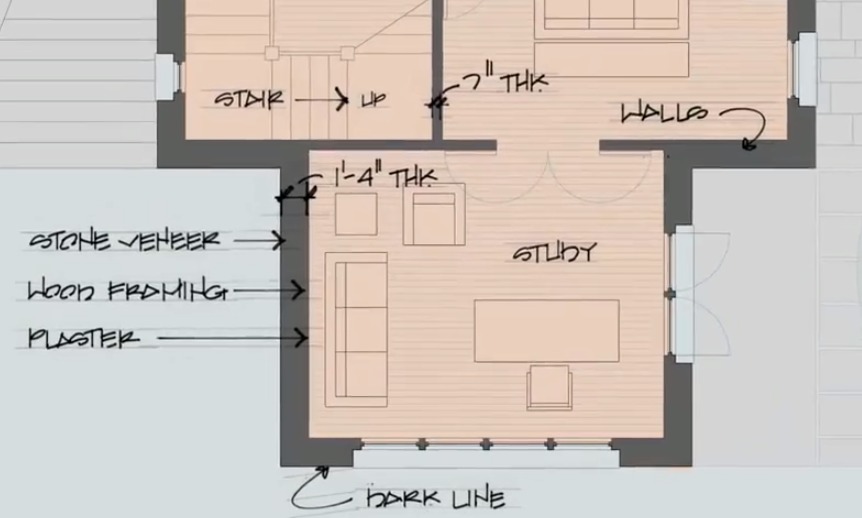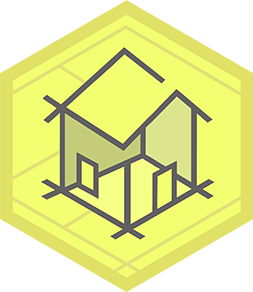Draft a floor plan
Draft a simple floor plan of a bedroom or small house using measurements, scale, and symbols to learn spatial thinking and basic drafting skills.



Step-by-step guide to draft a simple floor plan
How to Sketch a Floor Plan | COMPLETE Beginner's Guide!! Step by Step (2021)
Step 1
Pick the bedroom or small house area you want to draft and stand in the room to picture it.
Step 2
Measure the longest wall with the measuring tape and write down its length on your paper.
Step 3
Measure the wall perpendicular to the first (the width) and write down its length on your paper.
Step 4
Choose a scale and write it at the top of your paper for the plan such as 1 cm = 1 foot or 1 cm = 0.5 meter.
Step 5
Use your ruler to draw the outer walls to scale on your paper following the measurements and the scale you chose.
Step 6
Measure each door and window width and note those sizes on your paper.
Step 7
Mark and draw each door and window on your floor plan to scale using simple symbols like lines for windows and an arc for a door swing.
Step 8
Measure big furniture pieces or pick standard sizes and write their measurements beside each item name.
Step 9
Draw each furniture piece to scale on your plan using simple symbols or rectangles and move them until the layout feels right.
Step 10
Add a small legend that shows your scale and the symbols you used and color or label each room and item.
Step 11
Take a photo or scan of your finished floor plan and share your creation on DIY.org
Final steps
You're almost there! Complete all the steps, bring your creation to life, post it, and conquer the challenge!


Help!?
What can we use instead of a measuring tape or scanner if we don't have them?
If you don't have a measuring tape, use a piece of string to measure each wall then measure the string with a ruler and write the length on your paper, and if you can't scan your plan use your smartphone camera to take a photo to share on DIY.org.
My scaled drawing doesn't line up—what common mistakes should I fix?
If walls don't match, re-measure the longest wall and the perpendicular width, double-check the scale you wrote at the top of your paper, and use your ruler to redraw the outer walls to scale following those measurements.
How can I adapt the activity for younger children or older kids?
For younger kids use graph paper with a simple scale (one square = one foot) and pre-cut cardboard or paper furniture to move instead of drawing, while older kids can use a measuring tape, precise ruler drawing of doors/windows, and add a detailed legend and scanned photo to share.
How can we extend or personalize the finished floor plan?
To enhance the plan, color or label each room and item as in step 10, build a 3D mockup from cardboard boxes sized to your furniture measurements, and take a new photo to upload to DIY.org.
Watch videos on how to draft a simple floor plan
Architecture for Kids | Floorplans
Facts about basic drafting and spatial thinking
✏️ Before computers, designers created floor plans by hand using tracing paper, pencils, rulers, and ink — just like a big drawing adventure.
📏 Architects and drafters use standard symbols — doors are drawn as arcs, windows as thin rectangles, and stairs show direction with arrows.
🧭 Floor plans often include a north arrow so you can see which way the sun will hit the windows during the day.
🏠 Many small bedrooms are around 9–12 square meters (about 100–130 square feet), a handy target when planning furniture placement.
📐 On a 1:50 scale, 1 cm on the paper represents 50 cm (0.5 m) in real life — tiny lines become real rooms!
How do I teach my child to draft a simple floor plan?
What materials do I need to draft a child-friendly floor plan?
What ages is drafting a simple floor plan suitable for?
What are the benefits and safety tips for kids drafting floor plans?


One subscription, many ways to play and learn.
Only $6.99 after trial. No credit card required



